CardioExchange invited several members and participants to give us a list of what they consider the top three most important developments in cardiology in 2012. The same CardioExchange members offer predictions for 2013, which you can view here. Also, for comparison, check out last year’s predictions for 2012 to see which came to fruition.
What would your choices have been? Any sins of inclusion or exclusion here in your opinion? Join the conversations.
|
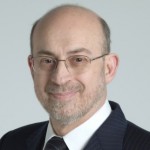 Steven E Nissen, MD Steven E Nissen, MD
-
The FREEDOM trial clearly demonstrating that CABG is superior to PCI in diabetic patients
-
-
Preliminary data on several new PCSK9 inhibitors show very large LDL reductions with administration once or twice per month
|
|
 Reva Balakrishnan, MD Reva Balakrishnan, MD
- The IABP SHOCK-II trial challenged our traditional thoughts of who needs balloon pump support in setting of acute MI and cardiogenic shock.
- Although the final data are not yet published, the preliminary results of the WOEST trial brought us one step closer towards answering the triple therapy conundrum.
- This year we saw the emergence of the “natural randomized controlled trial” in cardiology in a trial which used SNPs associated with low LDL in a “mendelian randomization analysis”. Mostly hypothesis generating, this metanalysis introduced a new and interesting way to study effects on a population level (reference is: J Am Coll Cardiol. 2012 Oct 9).
|
|
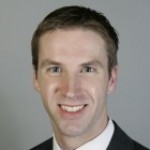 John Ryan, MD John Ryan, MD
- Progress and setbacks for novel anticoagulants: Agents such as dabigatran, rivaroxaban, and apixaban become increasingly relevant for AF as well as expanded use in DVT/PE. However, the FDA rejects rivaroxaban for ACS, and the the first report of failed dabigatran study in mechanical valves reinforces the need for caution and further study.
- The FREEDOM trial definitively shows the superior role of CABG in Diabetic patients with multi-vessel disease. This nullifies any argument about DES not being fairly represented in historical trials, but also makes us wonder what advances have truly been made since the CASS registry of old.
- The arrival of the generics: Clopidogrel, atorvastatin and valsartan come off patent. However, generic atorvastatin from Ranbaxy is marked by glass contamination and generic valsartan has yet to be marketed.
|
|
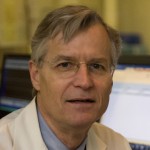 John E Brush, MD John E Brush, MD
- Supreme Court allows the Affordable Care Act to essentially remain intact.
- Over half of states do not implement insurance exchanges, adding back an element of uncertainty.
- Amid all of the uncertainty surrounding the practice of medicine, we still need to pay attention to the science. Lambert, et al reported the outcomes for patients with both atrial fibrillation and acute coronary syndromes treated with triple-drug therapy (Circulation 2012;126:1185-1193). The short and long term risk of bleeding was significantly higher in patients on triple-drug therapy, compared with those on dual-drug therapy, without any measurable benefit. First do no harm!
|
|
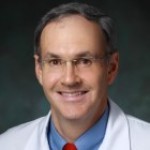 Roger Blumenthal, MD Roger Blumenthal, MD
- The efficacy and short to intermediate term safety of PCSK9 inhibitors were established in phase 2 studies (GAUSS, RUTHERFORD, RN316).
- Cardiac CT got patients with atypical chest discomfort home quicker and saved important healthcare dollars in patients triaged for chest pain in the emergency room (ROMICAT II, ACRIN-PA).
- There was a neutral effect of dalcetrapib in Dal-OUTCOMES. This further calls into question whether raising HDL-Cholesterol provides incremental benefits on top of moderate to high dose statin therapy.
|
|
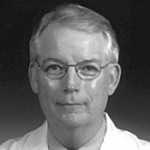 Thad F Waites, MD Thad F Waites, MD
- The Supreme Court decision on Obamacare. The Chief Justice surprised most everyone. He made a decision that was as apolitical as one could get and helped salvage the Supreme Court to be as a non-political as it can be. Of course in my opinion only.
- The reelection of President Obama. Obamacare continues on.
- The burgeoning national debt has burgeoned. And the percentage of that debt that is caused by medical system costs is a major national crisis.
|
|
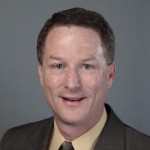 James de Lemos, MD James de Lemos, MD
- PCSK9 inhibitors knock the lights out of LDL-cholesterol.
- HDL-raising therapies continue their downward spiral after AIM HIGH and DAL-Outcomes.
- CABG wins comeback player of the year with favorable data from FREEDOM and long term Syntax data.
|
|
 JoAnne M. Foody, MD JoAnne M. Foody, MD
- Emerging body of data for alternatives to warfarin: dabigatran and rivaroxaban
- Insights into lipid lowering: PCSK9 phase II trials, Failure of Dal-OUTCOMES, strike two for CETP inhibitors
- TAVR
|
|
 Sanjay Kaul, MD Sanjay Kaul, MD
- For the first time in 13 years, the FDA approved 2 anti-obesity drugs – Qsymia and Belviq. Despite this major development, pharmacologic approach is unlikely to make a significant impact on the obesity epidemic.
- For the first time, the FDA, the CMS and the professional societies (ACCF, STS) collaborated in providing a roadmap for the judicious and responsible use of TAVR for patients with inoperable and high-risk aortic valve stenosis.
- In a major setback to personalized cardiovascular medicine, several null trials made the case for tailored antiplatelet therapy using genomic or platelet function testing virtually impossible to justify.
|
You can follow any responses to this entry through the RSS 2.0 feed.
Both comments and pings are currently closed.
